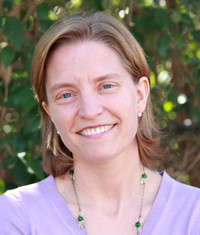
This blog is reposted with permission from SocialVelocity.net. The author, Nell Edgington was a panelist at this year’s Social Impact Exchange conference on scaling impact.
Last week I attended the 5th annual Social Impact Exchange Conference in New York City. It was an interesting gathering of funders, change makers and intermediaries all grappling with how to reach and sustain scaled social solutions.
“Scale” is such a challenging concept, and as I mentioned earlier, there are many entities struggling with exactly what scale means. According to Heather McLeod Grant (author of Forces for Good) whose keynote address kicked off the conference, “scale” is no longer about growing individual organizations or addressing individual issues, but rather about building movements and networks.
The idea of a networked approach to social change is not a new one (see the great Stanford Social Innovation Review article from 2008 by Jane Wei-Skillern and Sonia Marciano on this approach), but Heather underlined the importance of a more integrated and aligned approach to creating social change. I would have liked to see this idea taken further, perhaps with some of the Transformative Scale discussion that is happening elsewhere, included in this discussion.
There were some real highlights of the conference for me. First was the luncheon panel on the Black Male Achievement Movement and President Obama’s My Brother’s Keeper initiative. Tonya Allen of The Skillman Foundation was a hard-hitting moderator of Shawn Dove, from the Campaign for Black Male Achievement, William Snipes from Pipeline Crisis/Winning Strategies, and Andrew Wolk from Root Cause.
The group had a fascinating conversation about the movement to address “a whole generation of young men being pushed to the side.” As Snipes so eloquently put it, “This is a problem about who we are as a society, whether or not we are going to survive. The road we are on is not sustainable. We cannot continue to incarcerate one third of a community. This is an impractical way to run a society.”
The panel described and debated the complexity of addressing a huge systemic problem and how they have launched a movement to do just that. It was a candid and thought-provoking exchange.
Another highlight was GuideStar CEO Jacob Harold’s talk on their exciting efforts to transform the nonprofit information landscape. GuideStar’s goal is to address the “two elephants in the philanthropic room:” 1) some nonprofits are better than others (they create more impact per dollar spent), and 2) some donors are better than others (they create more impact per dollar given).
To address these “elephants,” GuideStar is collecting and analyzing deeper information about nonprofits and then distributing that information so that donors make better investments. (More on this next month when I interview Jacob as part of the Social Velocity Interview Series.)
The other real highlight of the conference for me was the keynote address on financial sustainability from Antony Bugg-Levine, head of the Nonprofit Finance Fund. Antony defined financial sustainability as “Repeatable and reliable revenue that exceeds ongoing operating costs, coupled with the ability to fund periodic investment in adaptation and growth.” In other words, a financially sustainable nonprofit brings enough reliable revenue in the door and can, when needed, raise capital for change and growth.
And that capital piece is often overlooked by nonprofits and funders. Antony described 5 types of capital helpful to nonprofits:
- Change Capital to position an organization for growth.
- Working Capital to handle fluctuations in cash flow.
- Recovery Capital to address shocks to an organization (natural disaster, fire, etc.)
- Risk & Opportunity Capital to develop a new program or different approach.
- Endowmentswhich can provide some unrestricted money, but should not be considered reliable revenue.
I also enjoyed participating in the “Business Models for Sustainability at Scale” panel with my colleagues Dana O’Donovan from Monitor Institute, Megan Shackleton from the Einhorn Family Trust, Heidi Shultz from the Helmsley Charitable Trust and Craig Reigel from the Nonprofit Finance Fund. We had a great discussion with very thoughtful and engaging audience questions about how to create sustainable financial models and how philanthropy can help move that forward.
The Social Impact Exchange assembled a smart, talented group of people to grapple with how we fund and grow solutions to the wicked problems we face. It was a thought-provoking couple of days.
Nell Edgington is the President of Social Velocity, which helps nonprofit leaders who are working to solve complex social problems do so more effectively and sustainably.